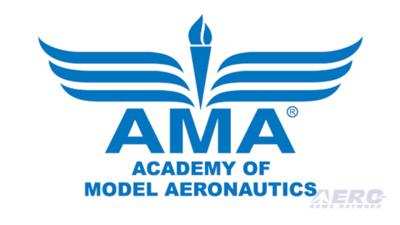Sun, May 31, 2020
Academy of Model Aeronautics Seeks Clarity From FAA
The AMA Government Affairs team has been working with clubs that are in controlled airspace to secure Letters of Agreement (LOA) for their flying sites. The FAA Reauthorization Act of 2018 requires all (model) flying sites within controlled airspace to have a LOA with air traffic control (ATC) facilities. Throughout the past year, AMA has been working with a team within the FAA to obtain agreements for approximately 350 clubs. Most clubs had pre-existing agreements in place which helped streamline this process.

There are certain factors that are used to determine altitude limits at flying sites. In controlled airspace, altitudes are preapproved using the FAA’s UAS Facility map values. That stated, many flying sites need altitudes that are above the facility map values, which require a Safety Risk Management (SRM) panel to take place. Clubs can contact AMA and request altitudes higher than the FAA UAS Facility Map. These clubs will then be put on a priority list that AMA provides to the FAA. The requested altitude limit can vary at each flying site and will depend on the operations and safety mitigations that take place at the site.
SRM panels work to identify, analyze, and assess potential safety risks and find mitigations to ensure clubs can continue their safe operations at their flying sites. These panels consist of a trained facilitator on the SRM process, AMA representatives, FAA representatives, subject-matter experts or third-party stakeholders, and panel observers.

Some factors that are analyzed include fixed site location in reference to the closest runway surface, airport departures and approach procedures, law enforcement activities, and manned air traffic operations. The goal of the SRM process is to treat any risks that are identified during the process and develop a plan to continue operating safely in the National Airspace System.
By the end of the year, the FAA hopes to provide a checklist in ATC manuals to conduct SRM panels at the local level in hopes of speeding up this process. At this time, there is only a process for SRM panels to be conducted for clubs in controlled airspace. AMA hopes to have a process for clubs in uncontrolled airspace soon.
More News
Aviation Governance Secured...At Least For a While The National Business Aviation Association similarly applauded the passage of the FAA's recent reauthorization, contentedly recou>[...]
Emphasis On Growing The Future of Aviation Through Concentration on 'AFFORDABLE FLYERS' It's been a number of years since the Latest Edition of Jim Campbell's HUGE SportPlane Resou>[...]
Amazilia Aerospace GmbH, Develops Digital Flight Control, Flight Guidance And Vehicle Management Systems Textron eAviation has acquired substantially all the assets of Amazilia Aer>[...]
Honeywell's Primus Brings New Tools and Niceties for Hawker Operators Hawker 4000 business jet operators have a new installation on the table, now that the FAA has granted an STC f>[...]
Company Celebrates Niche-but-Important Advancement in Industry Standards Echodyne has announced full integration of its proprietary 'EchoFlight' radar into the e American Aerospace>[...]
 Bolen Gives Congress a Rare Thumbs-Up
Bolen Gives Congress a Rare Thumbs-Up The SportPlane Resource Guide RETURNS!!!!
The SportPlane Resource Guide RETURNS!!!! Buying Sprees Continue: Textron eAviation Takes On Amazilia Aerospace
Buying Sprees Continue: Textron eAviation Takes On Amazilia Aerospace Hawker 4000 Bizjets Gain Nav System, Data Link STC
Hawker 4000 Bizjets Gain Nav System, Data Link STC Echodyne Gets BVLOS Waiver for AiRanger Aircraft
Echodyne Gets BVLOS Waiver for AiRanger Aircraft




